Not a member yet? Sign Up!
Info
Please use real email address to activate your registration
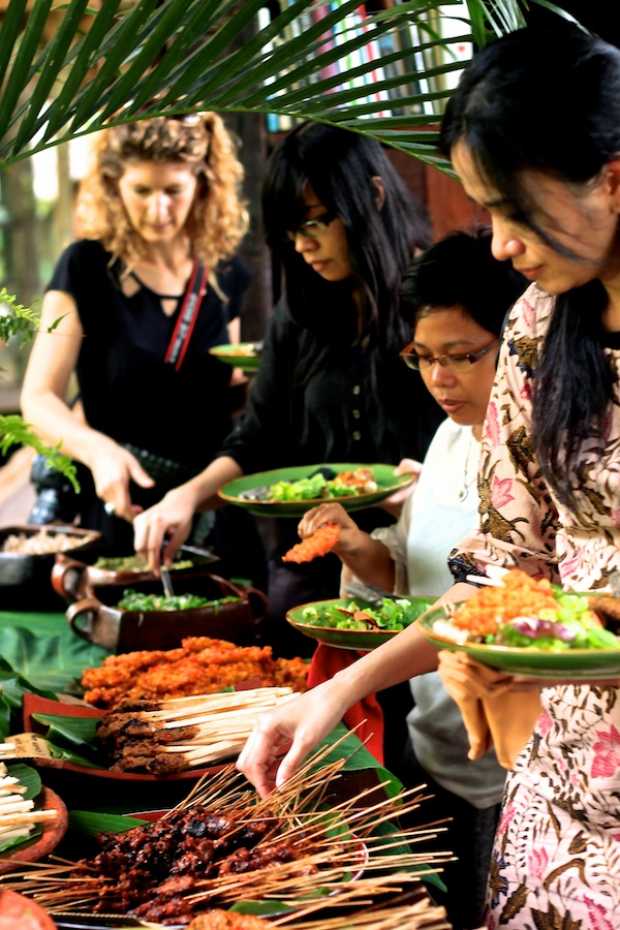
Bali, the land of the Gods, is a perfect place to show that low carbon tourism, to help address climate change, is possible.
A scholarly article on low-carbon tourism defines the terms as a new way of travel to acquire higher value and travel experience for tourists and more social, economic and environmental benefits for our society by reducing carbon emissions occurred in tourists’ activities.
Last weekend, The National Council on Climate Change in collaboration with The Climate Reality Project Indonesia and Slow Food Bali organized Creative Meals and Talks on Sustainable Tourism, themed Reducing Carbon Emission through Local Food Consumption.
The event was held at Bambu Indah, an eco-luxury boutique hotel on the bank of Ayung River in Ubud, Bali that offers a responsible lifestyle combined with modern comforts and customized services.
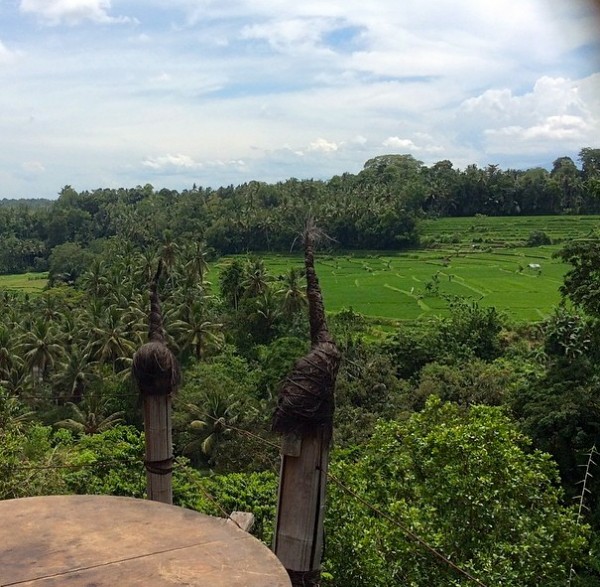
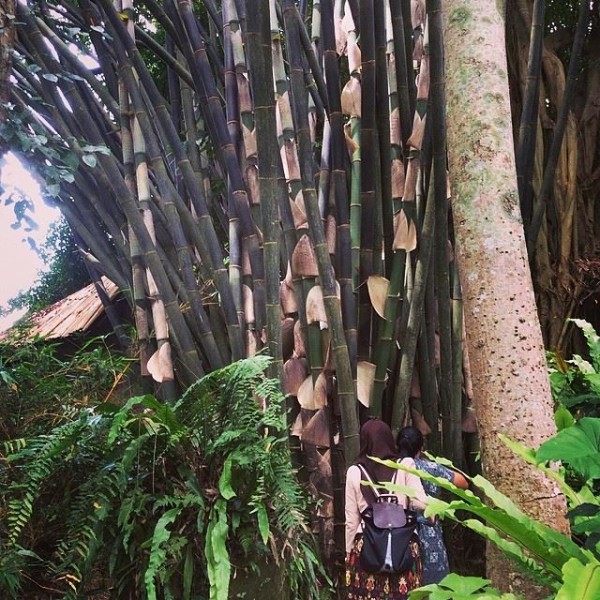
The World Tourism Organization estimated that the largest carbon dioxide emissions in the tourism sector (75%) come from transportation, followed by 21% from accommodation and 4 % from other activities.
Rising concentrations of carbon dioxide are warming the atmosphere. Therefore, accommodation with low energy consumption and renewable energy are necessary for low carbon tourism.
Sustainable hotel
HICAP Sustainable Hotel Award selected Bambu Indah (meaning beautiful bamboo) as one of its awardees in 2013 due to sustainable operations.
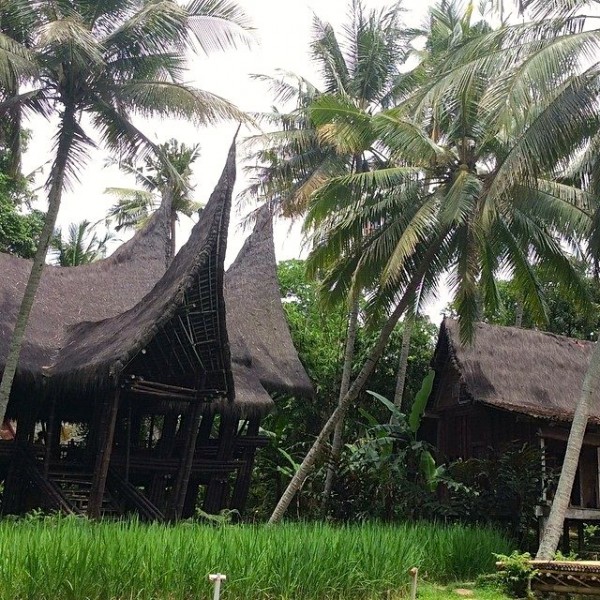

Throughout the hotel, according to HICAP, sustainability is evident with some of the structures made of bamboo and natural construction materials.
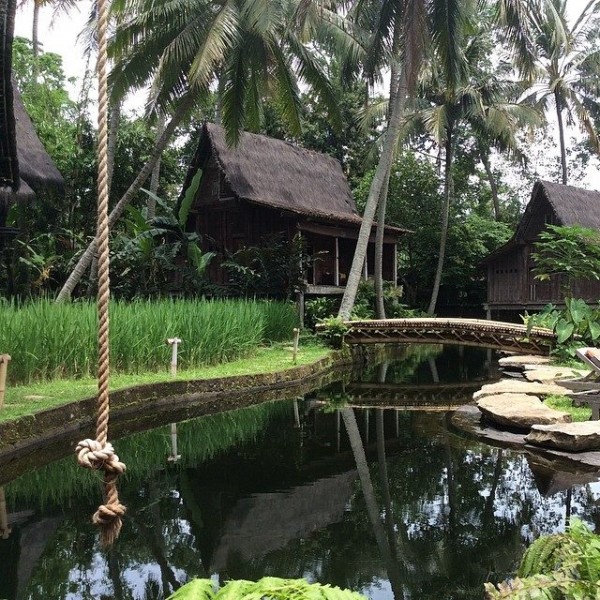
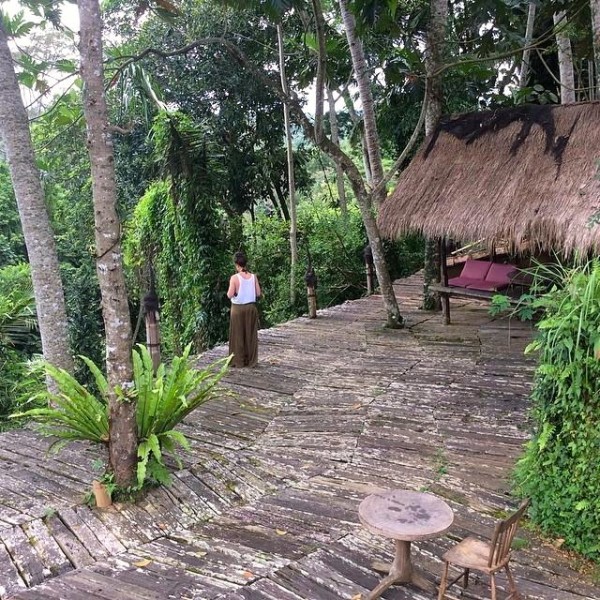
Bambu Indah's natural pool is an attraction in itself as it does not use chemicals but filters water from nearby Ayung River using lava stones. A deck shaped from the wooden base of railroad tracks and a green house made of car windshields shows creative use of recycled materials.
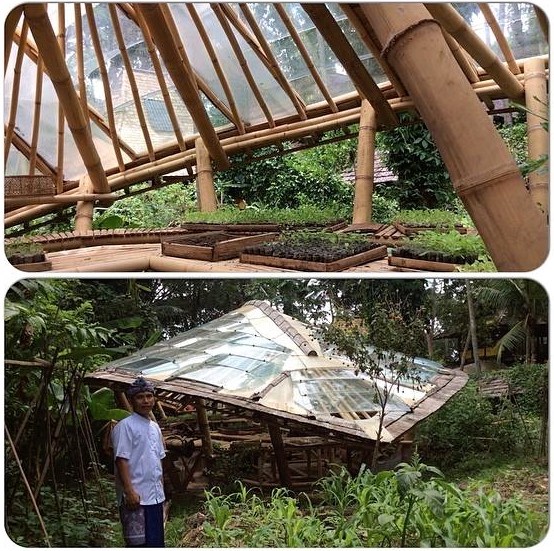
Farm-to-table
Around 30% of global greenhouse gas emissions originate from agriculture and food production. With increased economic growth, the combination of transporting food products, refrigeration, consumer behavior and waste management are also increasing rapidly.
Food produced closer to where it would be consumed emits less carbon dioxide related to transportation, fresher and helps local producers. With reduced food mileage, the need for the process and for cooling to reduce spoilage is also minimized.
Bambu Indah reduces its carbon emission by providing a hospital-grade water filtration system for drinking water, thus reducing food miles and bottled water waste. The place also has a composting facility that produces natural fertilizer.
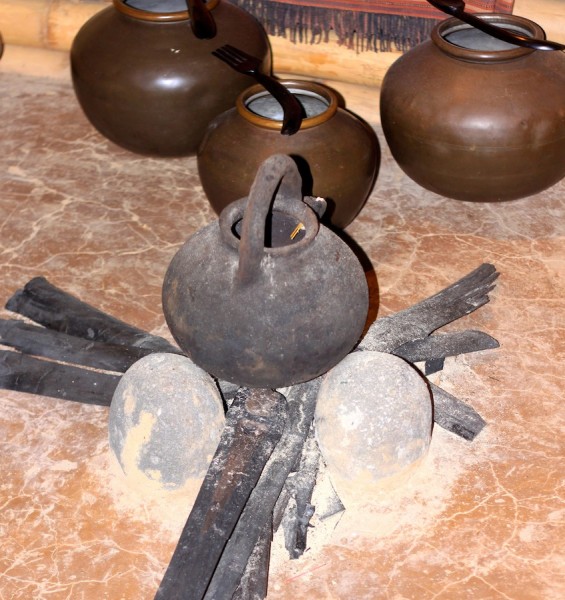
Dining at Bambu Indah is a farm-to-table menu with vegetables picked from its organic farms.
Understanding the resources used for food production and where the food come from will make consumers more aware of the connection between food and climate change so that the choices made will be more climate friendly.
Presenting Balinese food
Vivienne Kruger, a long time Bali resident released an informative book: Balinese Food. The Traditional Cuisine and Food Culture of Bali.
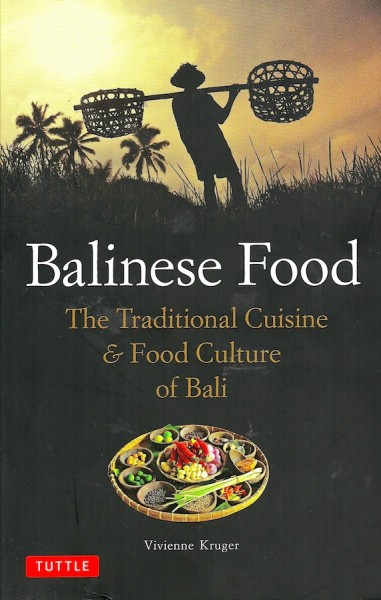
Balinese food, Kruger wrote, has tripartite role: as important nutrition, as offering for the gods, and as a necessity in the ritual of religious ceremonies.
The following lunch spread at the event as well as how each dish is served present a creative meal that attract tourists while at the same time reduce carbon emission and increase local income and productivity.
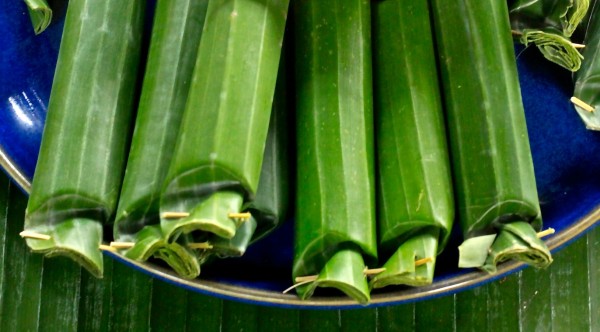
WELCOMING AND DRINKS: Balinese sweets, Jajan; Kintamani Bali coffee; Garden tea; Bambu Indah tap water; Bambu Indah soda water Lemongrass and ginger, and Ice Tea Coconut water.
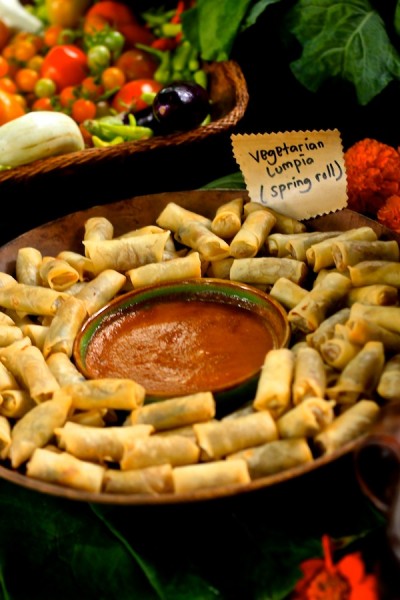
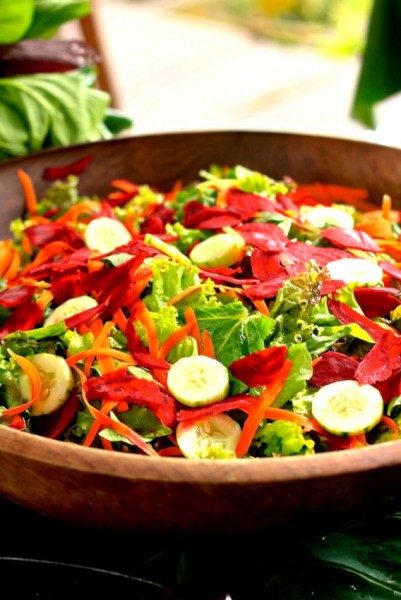
APPETIZER: Vegetarian lumpia, mini spring rolls; Organic garden salad
MAIN COURSE
Sate Kampung: fish satay , beef satay, chicken satay, tempe satay
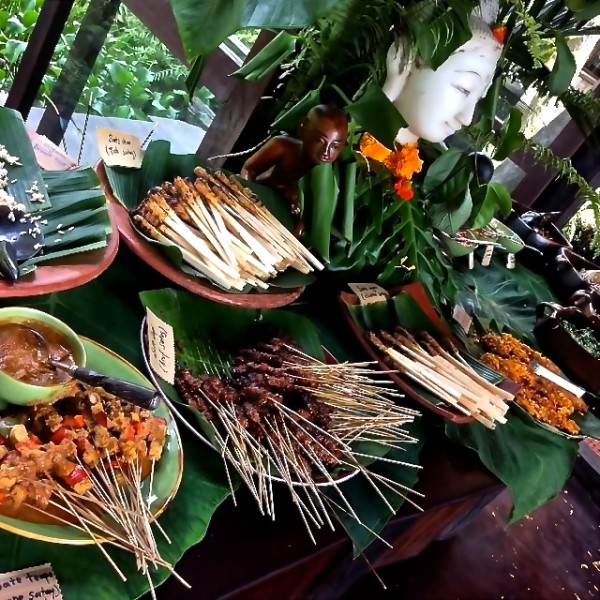
Three variations of fresh urab (vegetable dish): urab long bean, urab klungah, urab pakis
Organic brown rice, sweet tempe, corn fritters
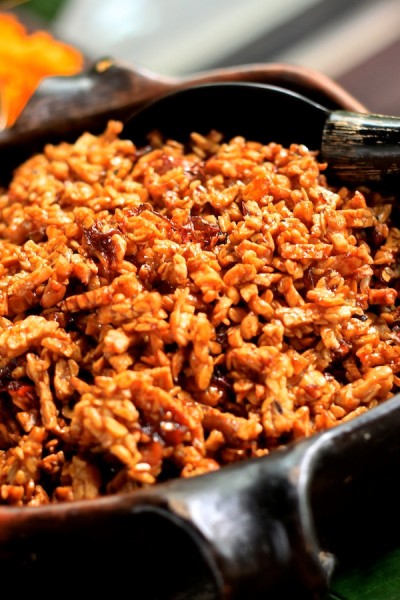
Sambal tomat, sambal matah, sambal goreng
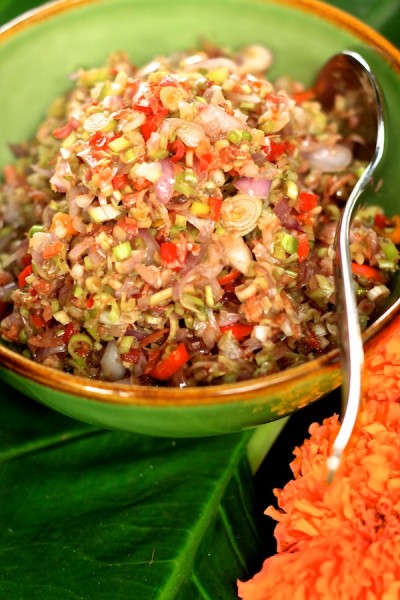
DESSERT: Dadar gulung and fruit platter
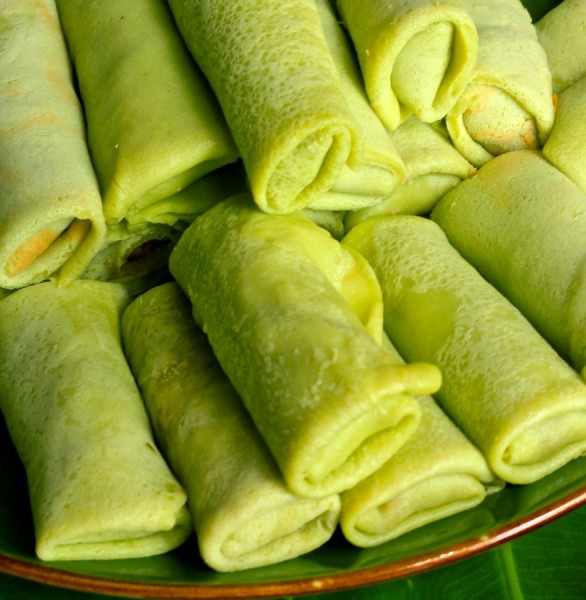
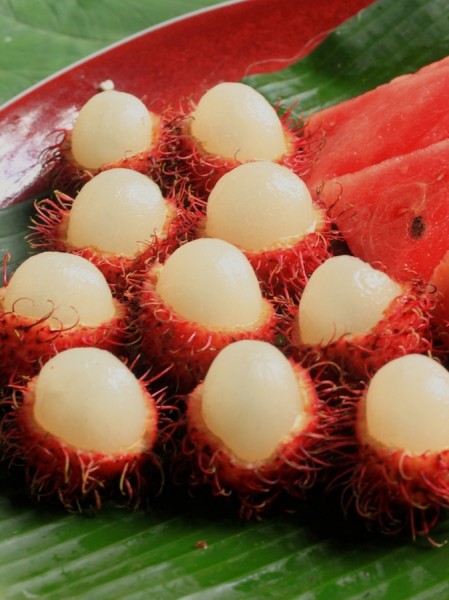
------------------------------
Images: Suzy Hutomo and Omar Niode Foundation